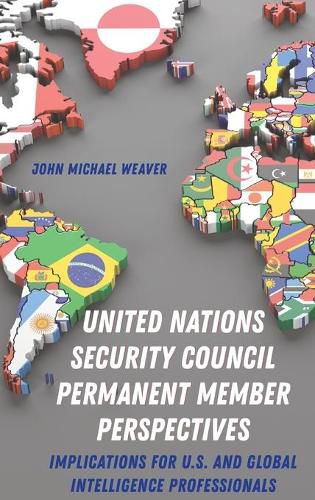Readings Newsletter
Become a Readings Member to make your shopping experience even easier.
Sign in or sign up for free!
You’re not far away from qualifying for FREE standard shipping within Australia
You’ve qualified for FREE standard shipping within Australia
The cart is loading…






This title is printed to order. This book may have been self-published. If so, we cannot guarantee the quality of the content. In the main most books will have gone through the editing process however some may not. We therefore suggest that you be aware of this before ordering this book. If in doubt check either the author or publisher’s details as we are unable to accept any returns unless they are faulty. Please contact us if you have any questions.
Threats to peace and stability are real and will likely continue into the foreseeable future. Likewise, globalization and its proliferation has made it increasingly difficult in knowing whether one is a friend or foe. This is particularly true when turning to the relationship of the five permanent members of the United Nations Security Council (UNSC); the relationships are not as clear as was the case two decades ago. Intelligence professionals the world over would be remiss in their assessments if they fail to take into account the position of each in the context of contemporary issues. Countries can be aligned on one issue and yet diametrically opposed on others. This research looks to enhance what Ernest Boyer refers to as scholarship of integration and uses the Federal Qualitative Secondary Data Case Study Triangulation Model and a variation of a model referred to as the York Intelligence Red Team Model-Modified (YIRTM-M) to conduct the analysis. More pointedly, this book looks at issues from the U.S. perspective to see how the YIRTM-M can be applied to advance its own interests on the world stage and to better understand when each can be seen as a friend or foe.
$9.00 standard shipping within Australia
FREE standard shipping within Australia for orders over $100.00
Express & International shipping calculated at checkout
This title is printed to order. This book may have been self-published. If so, we cannot guarantee the quality of the content. In the main most books will have gone through the editing process however some may not. We therefore suggest that you be aware of this before ordering this book. If in doubt check either the author or publisher’s details as we are unable to accept any returns unless they are faulty. Please contact us if you have any questions.
Threats to peace and stability are real and will likely continue into the foreseeable future. Likewise, globalization and its proliferation has made it increasingly difficult in knowing whether one is a friend or foe. This is particularly true when turning to the relationship of the five permanent members of the United Nations Security Council (UNSC); the relationships are not as clear as was the case two decades ago. Intelligence professionals the world over would be remiss in their assessments if they fail to take into account the position of each in the context of contemporary issues. Countries can be aligned on one issue and yet diametrically opposed on others. This research looks to enhance what Ernest Boyer refers to as scholarship of integration and uses the Federal Qualitative Secondary Data Case Study Triangulation Model and a variation of a model referred to as the York Intelligence Red Team Model-Modified (YIRTM-M) to conduct the analysis. More pointedly, this book looks at issues from the U.S. perspective to see how the YIRTM-M can be applied to advance its own interests on the world stage and to better understand when each can be seen as a friend or foe.